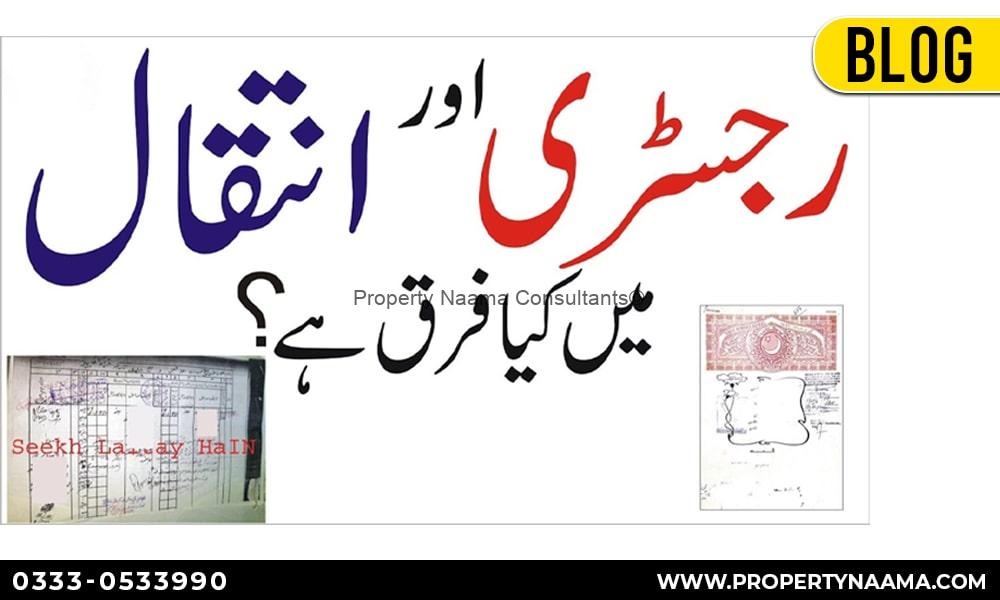In this informative blog, we are going to explore the basic difference between Registry and Inteqal. The first half of the blog comprises of the basic idea of the two.
While the last half consist of difference between Registry and Inteqal in a chart form.
Read till the last line to become a property genius.
What is a Registry?
A process involving sale deed creation, claiming property legal rights, and registering a sale under your name is called Property registry.
The complete process of property registry involves following steps:
- Selling a Property Starts with an advertising circular in a local Newspaper. Where you invite the general public to make allegations about your property (If they have any). This practice usually done in urban areas where high-value commercial property is involved.
- Then as a buyer, you have to verify the seller’s rights to sell the property.
- Verification of proper registration of selling property in the office of the local Municipality or Land Registration office.
- Get the No-Objection Certificate (NOC) for the property that is being sold by the seller.
- In due diligence, you have to hire a lawyer to draft the Sell/Purchase agreement for the concerned property.
- After that, you have to pay the government property Taxes/fees in the following details :
- Stamp Duty (3% of Property Value)
- Capital Value tax –CVT (2% of Property Value)
- Town Tax (1% of the Property Value)
- A Stamp Paper will be issued upon receipt of Payment to the stamp office to legitimate the Property.
- It will involve no extra fee and this process usually takes a day time-frame.
- Finally submit this Stamp Paper to the registrar office, to register the transfer of property (s) ownership.
- This process will be quick without extra charges if you have paid all the mandatory dues earlier.
(This whole process can be completed in a day time-frame)
Here it marks the finality of the Property Registration Process.
Note: The property taxes and registration fees may be varied according to the rules of concerned provincial governments.

What is Inteqal?
Once you have done with the sale registry, you also need to transfer the property deed to your name.
This process is called Inteqal (Mutation) and the document is known as Conveyance deed.
This process involves following steps:
Visit the Sub-Registrar office of the particular area, where your property is located to submit following things:
- Document of Registry/Sales deed
- Identification of both: The Buyer and the Seller.
- Original title deed of the seller.
- The power of the attorney (If the original owner has authorized someone to sell the property on his/her behalf).
The recipient can be obtained (Issued Immediately) and collecting the deed (Issued around a month).
Transfer Property taxes, Utility, and Municipality Services in the name of the buyer (Will be done by the buyer).
Difference between Inteqal and Registry
In the above discussion, you have got a detailed idea about Inteqal and the registry. You can get a rundown of information about the difference between Inteqal and Registry in the below chart.
|
Registry
|
Inteqal |
|
Also known as Bay-e-Naama
|
Other name is Mutation |
|
It is a Sale Deed
|
Uses as Conveyance Deed |
|
Mandatory for property deal
|
Optional |
|
Records Sales of Property
|
Used for transfer of ownership |
|
Done as a first step of process
|
Considered as the last step of process |
|
More Costly
|
Less Costly |
|
Common Practice in City Area
|
Usually Involve village and sub-city areas |
|
Proffered for built-in commercial property
|
Best for raw piece of land |
The sole purpose of this blog is to save you from any future difficulty while dealing with property. Keep in mind the above information and share it with your friends and family circle.
If you have any queries about this topic or need any guidance about any real estate-related issue contact us.
Our Email address: Info@propertynaama.com
Oversees Clients (For Call Only):
UAN: +92 332 7777888
Overseas and Domestic Clients (For WhatsApp):
WhatsApp: 0333 0533990

